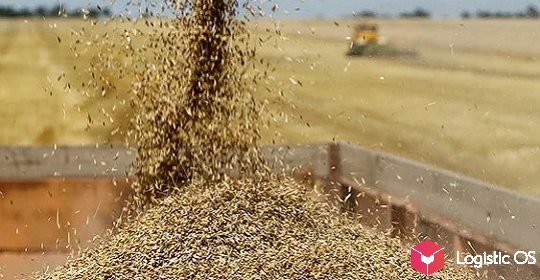2020 set a new record for the harvest of oilseeds: Russian farmers received a harvest of 24 million tons.
Sunflower, soybean and rapeseed are mainly grown in Russia. Let’s consider the situation in each industry separately.
Sunflower
This crop was harvested 14 million tons. For the further sale of sunflower, the main factor was the sharp rise in the price of sunflower oil (up to + 58%). This led to the fact that many countries began to actively purchase sunflower seeds in order to independently produce oil. For example, Turkey has abolished any import duties on this crop.
In turn, this led to the fact that the Russian government took several measures at once aimed at regulating the industry:
- 30% duty on the export of sunflower and rapeseed abroad.
- Limiting the maximum retail price of sunflower oil in stores to 110 rubles per liter.
In general, there is a tendency to reduce the dispatch of «clean» sunflower abroad, and to process it for oil domestically, giving work to the processing enterprises and more profit for exporters. After all, a ton of sunflower costs about $ 450, and a ton of oil — about $ 1,200.
Rape
Russia has harvested 2.6 million tons of this crop, leaving even Ukraine behind.
The price of rapeseed today is about $ 500 per ton . In general, it is characterized by all the same regularities as for sunflower: the demand for oil grows — its price grows — the cost of rapeseed itself also increases.
Soy
With soybeans, the situation is fundamentally different.
First, Russia still produces very little of it. Although the Russian Federation took the eighth place in the list of exporting countries, with its 4.4 million tons it is very far from Brazil or the United States (123 million tons and 97 million tons, respectively). There is reason to expect an increase in soybean harvest in the coming years, but this growth is unlikely to be explosive.
Secondly, Russia not only exports, but also imports soybeans. Moreover, about 0.8 million tons are exported, and twice as much is imported into the country.
This strange situation is due to the large size of the country. The community thrives mainly in the Far East, and the entire crop is immediately sold to nearby China. The Chinese complain that Russia sells them so little soybeans and are ready to buy an order of magnitude more — which will definitely become a growth driver for this sector of the agro-industrial complex.
But in the central part of Russia, few people grow soybeans, and it is cheaper to buy it from the EU than to carry it across the country from the Far East.

At the same time, there are no objective obstacles to increasing the acreage of soybeans in European Russia. Therefore, we can expect that this problem will be solved.
But on the whole, Russia is confidently increasing its oilseed yields, so in the coming years it has every chance to completely bypass Ukraine.

